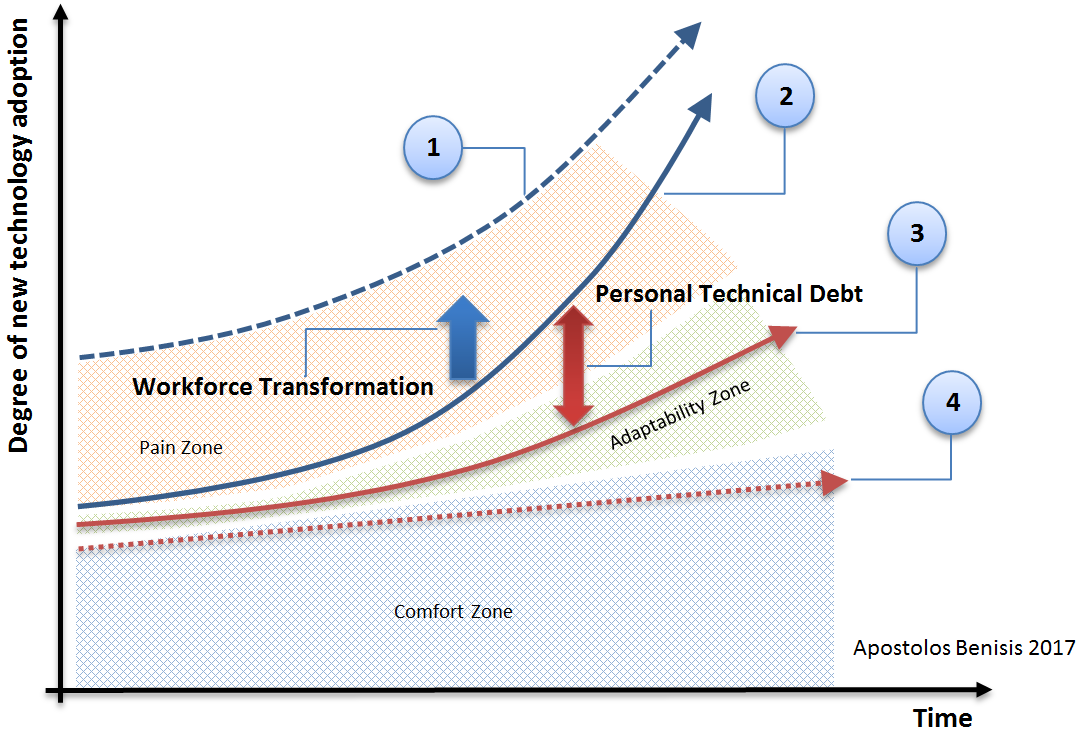A simple model inspired by the „Digital Transformation Model“ by Alain Veuve, to explain the necessity for personal change, in order to keep up with the technological developments.
(1) Emerging Technologies
As new technologies emerge, they are initially adopted by early innovators and gradually by the rest of the majority, transitioning from trends to industry standards. The degree of adoption of new technologies by the industry resembles a wave, it starts slow and then increases rapidly.
(2) Adoption By The Workforce
The industry is changing and so does the skill-set required from professionals in order for them to remain competitive in the market. The main body of the work force typically reacts with delay on new technologies. As the degree of adoption of new technologies by the industry increases, it reaches a critical point and the work force rapidly transforms to follow the industry’s needs. If the local workforce cannot keep up with the changes, the industry will look for professionals outside the local borders.
(3) Personal Development Path
Each one of us has a different ability to adapt to change. The personal price we have to pay to keep up with change depends on our personal adaptability and the moment we choose to change. The personal adaptability is the ability to easily adapt to change and varies from person to person. In general, our personal adaptability is not always enough to keep up with the rate at which technological developments are happening and this leads to a personal skills debt. The debt increases by time and if we delay the change too long, it may exceed our ability to transform. The earlier we recognize the need for change, the easier we can manage our personal skills dept. This is a continuous, never ending effort, that requires us to move outside our own comfort zone.
(4) Legacy Workforce
There will always be parts of the workforce that will not follow the market changes. There are various reasons for this, for example because it is more comfortable to keep things as they are and people naturally tend to resist change, or because parts of the workforce do not have access to the means required to achieve the change. Eventually this part of the workforce will be overwhelmed by the developments and will have difficulty remaining competitive.
Sources and further reading:
Das „Digital Transformation Model“ by Alain Veuve
